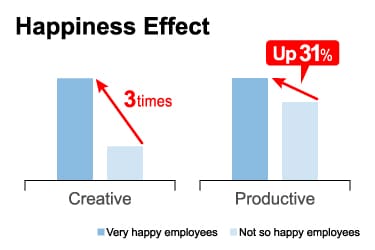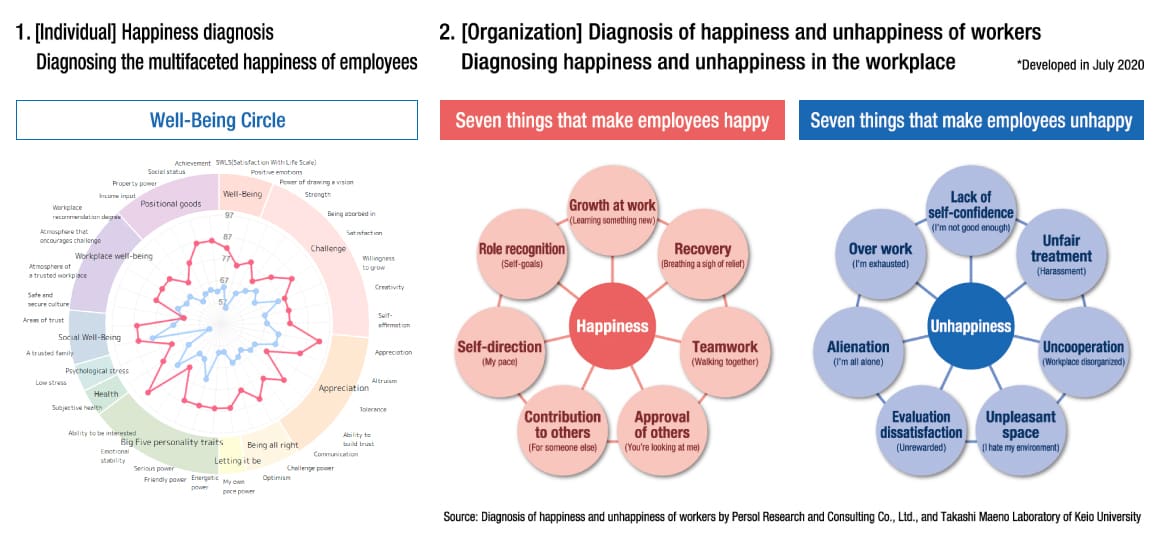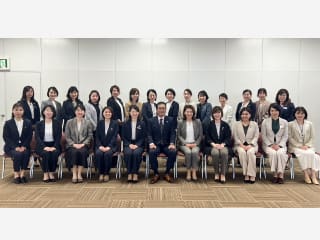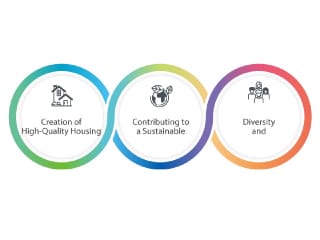In Order to Make Sekisui House the Happiest Company in the World, We Became the First Japanese Company to Conduct a Survey of Happiness Levels
In order to realize our vision of “making home the happiest place in the world,” it is important that we first pursue employee happiness. Therefore, in November 2020, we conducted a survey of the happiness levels of all Sekisui House Group employees, numbering some 27,000. Under the supervision of Professor Takashi Maeno*, the leading figure in happiness-centered management studies, we conducted Japan’s first survey that both measured the happiness of employees and the workplace from multiple perspectives and analyzed correlations. In all the four surveys we have conducted since 2020, our employees’ overall Well-Being Circle happiness scores were higher than the average, and their scores have been on an increasing trend for four consecutive years.
* Professor at Keio University Graduate School of System Design and Management and Dean and Professor of the Faculty of Well-Being, Musashino University

The Importance of Employee Happiness Levels to the Company

Happiness Effect
Employee “satisfaction levels” are an indicator that measures employees’ satisfaction with their benefits and work environment. Meanwhile, employee “happiness levels” are an indicator of overall quality of life, including both work and personal lives, assessing factors like personal growth and a sense of value in one’s work from a subjective point of view. According to research conducted by American psychologists, workers with high levels of happiness have three times the creativity of others, and 31% greater productivity. When employees find happiness in their work, they are more likely to perform well, and this in turn stimulates communication and leads to innovation.
Having a Dialogue That Utilizes the Survey Results: Pursuing Happiness for Each and Every Employee
The happiness level surveys conducted by Sekisui House are also a message promoting our desire to make our employees happy. We are holding dialogues and workshops based on the survey results, so employees can visualize the happiness of themselves and their workplaces, and each and every employee can really think about what it means to them to achieve happiness. By creating a workplace culture where active communication facilitates innovation and there is a high level of psychological comfort, we hope that this will lead to each one of our employees taking the initiative to achieve happiness.

Active Participation of Diverse Personnel [Main Page]
International Business Headquarters (America, Australia)
Specific Initiatives: Workplaces Where Anyone Can Demonstrate Their Abilities
Diversity meet-and-greet events 2022
Diversity meet-and-greet events 2021
Specific Initiatives: Becoming an Industry Leader in LGBTQ Initiatives








